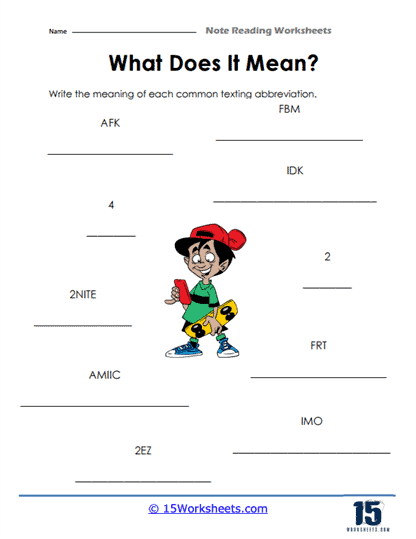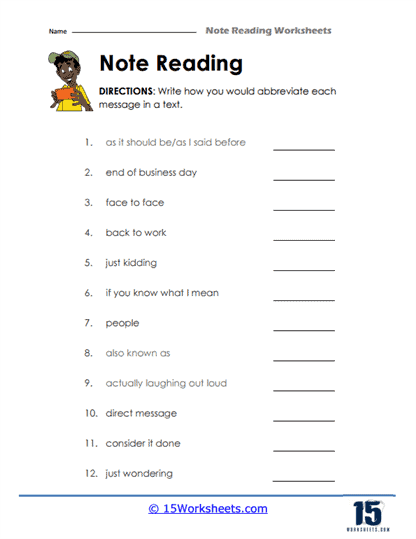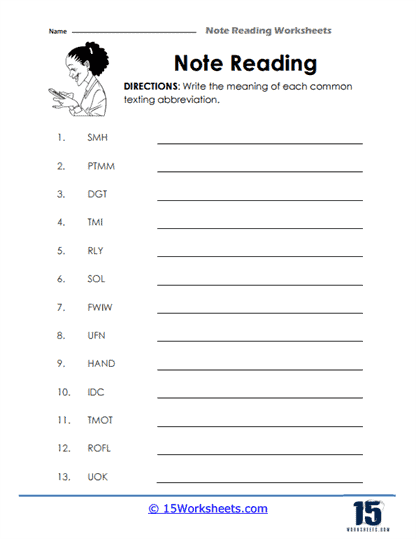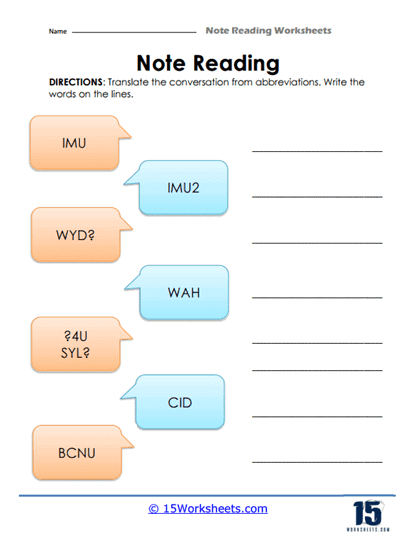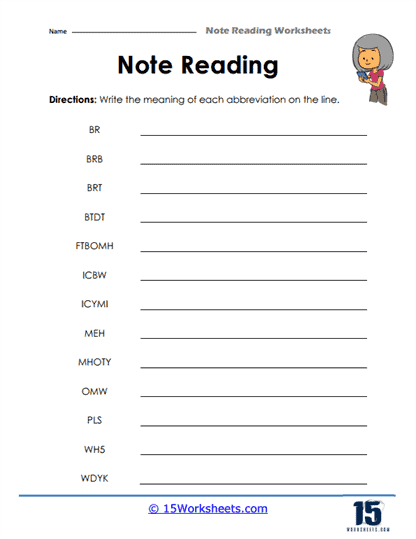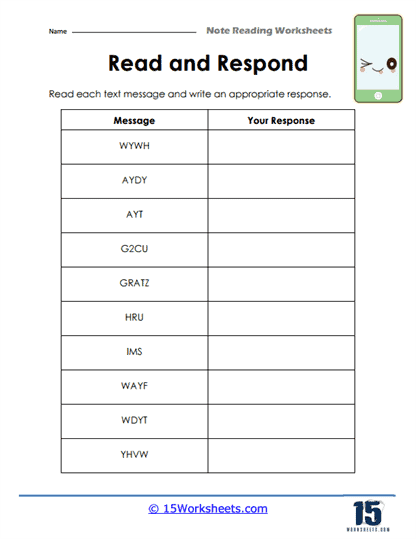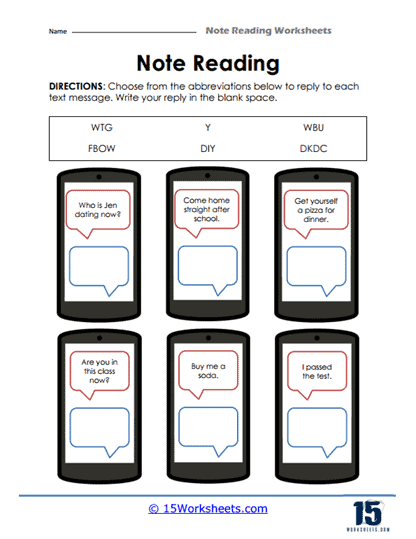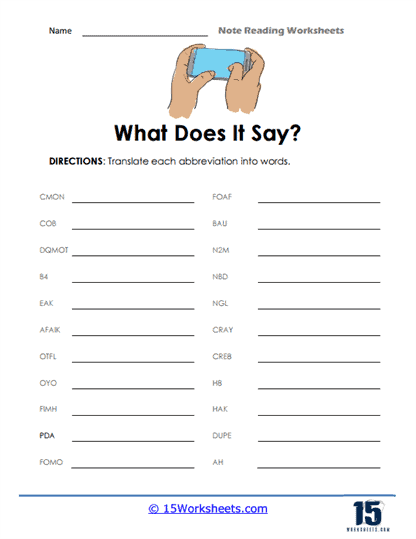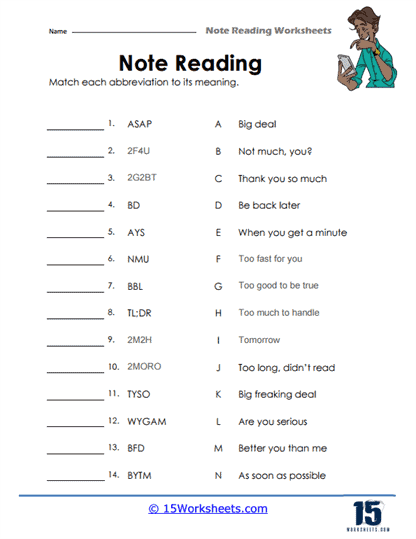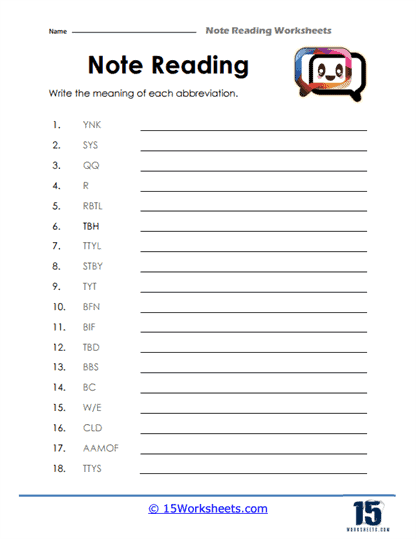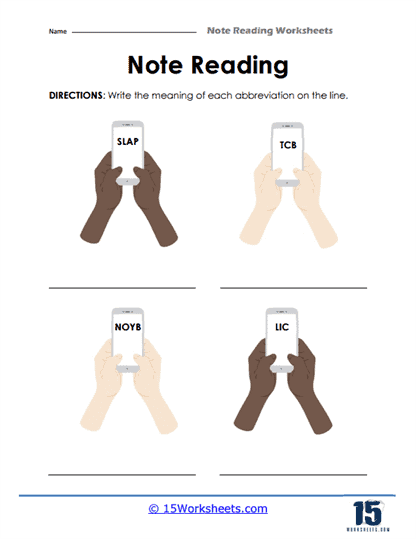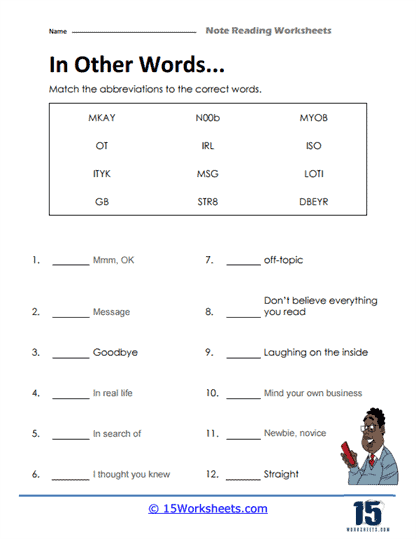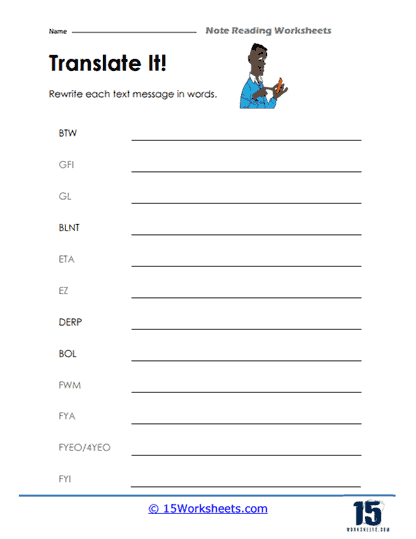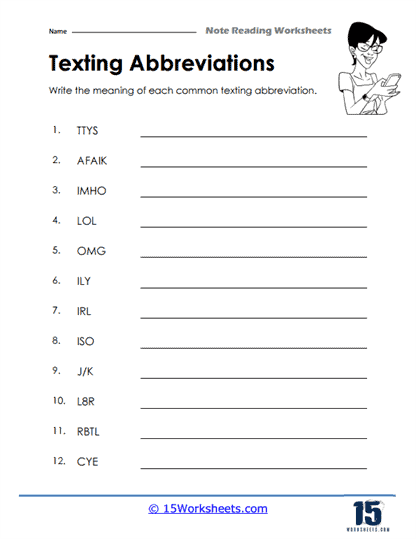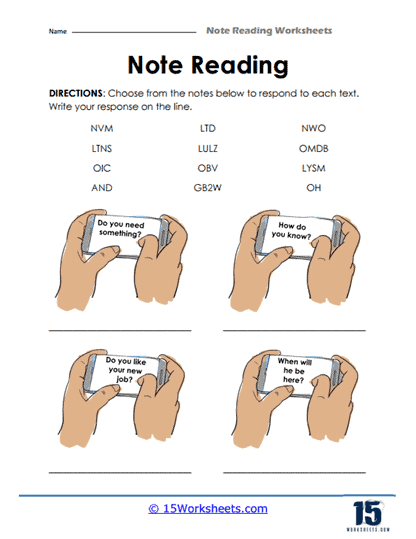Note Reading Worksheets
All About These 15 Worksheets
Embark on an engaging journey into the digital linguistic landscape with our thoughtfully curated collection of 15 dynamic worksheets focused on “Note Reading” in the realm of texting abbreviations. Designed to enhance students’ digital literacy and understanding of modern communication shortcuts, this collection equips students with the skills to decode and decipher texting abbreviations, fostering clear and effective digital communication.
This collection features a range of interactive activities tailored to engage students and facilitate their mastery of decoding texting abbreviations:
- Abbreviation Decoding: Students will unravel the meanings behind commonly used texting abbreviations, enriching their digital vocabulary.
- Contextual Usage: Through real-life scenarios, students will determine the appropriate usage of specific abbreviations, deepening their understanding of digital communication nuances.
- Analyzing Intention: Students will analyze the intention and tone behind different abbreviations, emphasizing the importance of considering the audience and context.
- Digital Etiquette Discussions: Worksheets may prompt discussions about the appropriate use of texting abbreviations in formal and informal contexts, teaching students about digital communication etiquette.
Why is learning abbreviations important?
The primary goal of this collection is to empower students with the ability to interpret and understand the myriad of abbreviations and acronyms commonly used in digital communication. Through a series of interactive worksheets, students will:
- Develop Digital Literacy: Students will become proficient in decoding texting abbreviations, acquiring the skills needed to navigate modern communication platforms effectively.
- Enhance Communication Skills: By understanding the context and nuances of various texting abbreviations, students will be better equipped to communicate clearly and appropriately in digital conversations.
- Cultivate Language Awareness: Engagement with digital language will heighten students’ awareness of language evolution and the ways in which communication adapts to technological advancements.
- Foster Critical Thinking: Decoding texting abbreviations requires students to think critically about context, intent, and appropriate usage, promoting nuanced communication.
- Build Empathy and Respect: Through discussions on appropriate abbreviation usage, students will learn to communicate with empathy and respect for diverse audiences.
Embrace the digital language landscape while honing your students’ digital literacy with our “Decoding Texting Abbreviations” worksheet collection.
Whether they’re novices navigating the digital realm or tech-savvy individuals seeking a comprehensive understanding of modern communication, these worksheets provide an immersive, engaging, and effective way to master the art of digital abbreviation decoding. Your students will emerge with enhanced communication skills, an enriched digital vocabulary, and a heightened awareness of the intricate world of modern language evolution.
What are the common texting abbreviations?
Texting abbreviations have become a significant part of digital communication due to their convenience and speed. They are commonly used to convey messages in a more concise and efficient manner. Here are some of the most common texting abbreviations:
- LOL: Laugh Out Loud
- BRB: Be Right Back
- OMG: Oh My God
- TTYL: Talk To You Later
- IDK: I Don’t Know
- BTW: By The Way
- ROFL: Rolling On the Floor Laughing
- FYI: For Your Information
- JK: Just Kidding
- OMW: On My Way
- IMO/IMHO: In My Opinion/In My Humble Opinion
- SMH: Shaking My Head
- BFF: Best Friends Forever
- GTG: Got To Go
- TMI: Too Much Information
- ICYMI: In Case You Missed It
- YOLO: You Only Live Once
- AFK: Away From Keyboard
- OTP: One True Pairing
- FOMO: Fear Of Missing Out
- IMO: In My Opinion
- HBD: Happy Birthday
- OMG: Oh My Gosh
- ILY/ILU: I Love You
- ICYMI: In Case You Missed It
Remember that the use of texting abbreviations might vary based on context, cultural trends, and personal preferences. Additionally, while these abbreviations are widely used, it’s important to consider your audience and the level of formality in your communication.
Using texting abbreviations might be appropriate in casual conversations, but in more formal or professional settings, it’s often best to use complete words and sentences for clarity and professionalism.

